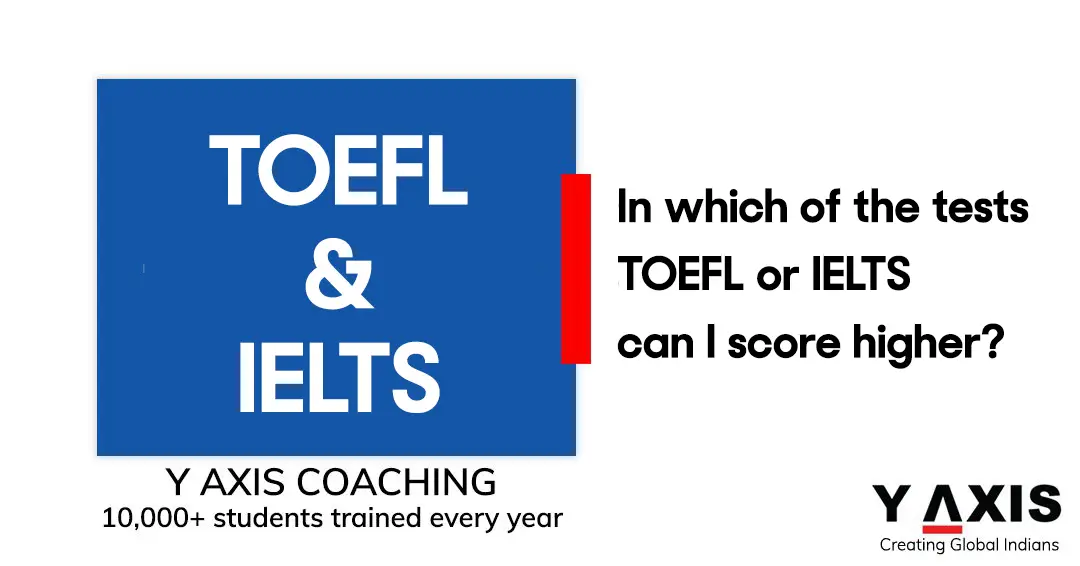Posted on November 14 2023
In which of the tests - TOEFL or IELTS – can I score higher?
By , Editor
Updated November 14 2023
Why prepare for TOEFL?
- Accepted by educational institutions globally
- Tests English language abilities professionally
- To be certified in English expertly
- In order to immigrate
- To improve career prospects
In which of the tests - TOEFL or IELTS – can I score higher?
The Test of English as a Foreign Language (TOEFL) and International English Language Testing System (IELTS)are two standardized language tests that assess the test-takers listening, reading, speaking, and writing skills in English. However, the time that the tests allot for each section differs, and the number of questions asked per section also varies.
In which test can you score higher?
Get to know both the test formats better by learning how they are structured and how they grade candidates to know which you can get a higher score.
Listening sections of IELTS and TOEFL
The IELTS listening sections last 30 minutes and comprise four conversations, each containing ten questions.
The recordings of the conversations are played only once, and candidates must answer questions based on them. One mark is given for each correct answer.
On the other hand, the listening sections of TOEFL range from 41 to 57 minutes.
Candidates here must listen to conversations, discussions, and lectures and answer questions ranging from 28 to 39 based on them.
Reading sections of IELTS and TOEFL
In the IELTS, three reading sections last 60 minutes overall, during which 40 questions are asked. First, test-takers must listen to three reading passages from which questions will be asked. For each correct answer, one mark is given.
On the other hand, the TOEFL reading sections range from 54 to 72 minutes. They include three or four passages sourced from educational material and 30 to 40 questions.
Writing sections of IELTS and TOEFL
The IELTS writing section lasts 60 minutes and contains two writing tasks. In one, you are required to explain a diagram or infographic in 20 minutes. On the other, you need to respond to an argument with your viewpoint in 40 minutes. The tone of writing in both should be formal.
The writing section of TOEFL comprises two tasks. In one, you will have to read a passage, besides listening to a recording, after which you need to respond. On the other hand, you need to write an essay expressing an opinion or relating your experience.
Speaking sections of IELTS and TOEFL
The speaking section of the IELTS, which ranges from 11 to 14 minutes, judges your spoken English in three parts. In the first part, you need to answer personal questions and questions about other generic topics. In the second part, you will be given a topic, and you will have one minute to prepare for it, after which you will need to speak about it for two minutes. The third part involves questions/discussions on what you spoke about in part 2.
The TOEFL speaking section lasts 17 minutes and has four tasks. Task 1 entails Independent Speaking, where candidates need to speak, sharing their views on a generic topic. The remaining tasks require Integrated Speaking, where you need to combine reading and speaking or listening and speaking.
If you are planning to the IELTS or TOEFL exam, get in touch with Y-Axis, a premier overseas immigration consultancy, to get professional coaching and guidance.
Why choose Y-Axis?
Y-Axis provides you the following.
- World-class coaching material from sources like the British Council & Pearson
- Experienced faculty with a track record of success
- Platinum partner with British Council
- Coaching that fits your busy schedule
- Multiple ways to learn – online, in-class, live stream, and private
- Flipped classroom approach, which is proven to improve learning
- Assistance with test slot booking
Tags:
Is it easier to score in the IELTS than in the TOEFL?
Between TOEFL and IELTS
where can one score more
Share
Options for you by Y-Axis
Get it on your mobile
Get News alerts
Contact Y-Axis

